
USS Blueback (SS-326), a Balao-class submarine in commission from 1944 to 1948, was the first submarine of the United States Navy to be named for the blueback salmon, also known as the sockeye salmon. She completed three war patrols in the South China Sea and Java Sea during World War II. She sank a 300-displacement ton submarine chaser as well as eight smaller vessels.

USS Flier (SS-250) was a Gato-class submarine, was the only ship of the United States Navy to be named for the flier.

USS Bergall (SS-320), a Balao-class submarine in commission from 1944 to 1958, was the first ship of the United States Navy to be named for the bergall, a small fish of the New England coast. During World War II she made five war patrols between 8 September 1944 and 17 June 1945, operating in the South China Sea, Java Sea, and Lombok Strait and north of the Malay Barrier. During these patrols she sank two Japanese merchant ships totaling 14,710 gross register tons and one 740-displacement ton Imperial Japanese Navy frigate. She also damaged the Japanese heavy cruiser Myōkō, which was never repaired.

USS Bluegill (SS-242/SSK-242) was a Gato-class submarine in commission in the United States Navy from 1943 to 1946, from 1951 to 1952, and from 1953 to 1969. She was named for the bluegill, a sunfish of the Mississippi Valley.

USS Bluefish (SS-222), a Gato-class submarine, was the first ship of the United States Navy to be named for the bluefish. Between 9 September 1943 and 29 July 1945 she completed nine war patrols. Her operating area extended from the Netherlands East Indies to the waters south of Honshū. According to the notoriously unreliable JANAC accounting, Bluefish sank 12 Japanese ships totaling 50,839 tons.

USS Bream (SS/SSK/AGSS-243), a Gato-class submarine, was the first ship of the United States Navy to be named for the bream. She served during World War II, and her war operations extended from 1 June 1944 to 15 June 1945. During this period she completed six war patrols operating in the Java Sea, Celebes Sea, Sulu Sea, South China Sea, and Gulf of Siam. She sank two Japanese merchant ships totaling 6,934 gross register tons. In addition, Bream shared with the submarines USS Ray (SS-271) and USS Guitarro (SS-363) the destruction of a 6,806-gross register ton passenger-cargo ship. On 23 October 1944, while patrolling off western Luzon, Bream made a daring surface attack on a Japanese naval force, damaging the heavy cruiser Aoba.

USS Croaker (SS/SSK/AGSS/IXSS-246), a Gato-class submarine, was the first ship of the United States Navy to be named for the croaker, any of various fishes which make throbbing or drumming noises.
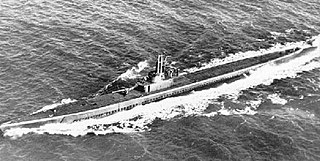
USS Flasher (SS-249) was a Gato-class submarine which served in the Pacific during World War II. She received the Presidential Unit Citation and six battle stars, and sank 21 ships for a total of 100,231 tons of Japanese shipping, making her one of the most successful American submarines of the War. She was the first ship of the United States Navy to be named for the flasher.
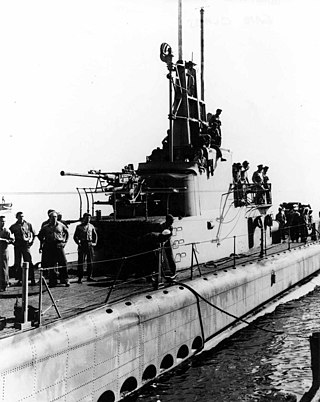
USS Gabilan (SS-252), a Gato-class submarine, was the only ship of the United States Navy to be named for the gabilan, an eagle ray of the Gulf of California.
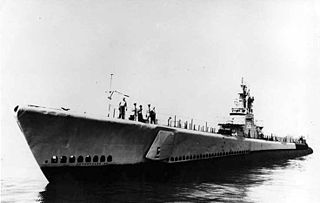
USS Hake (SS/AGSS-256) was a Gato-class submarine of the United States Navy that served during World War II.

USS Jack (SS-259), a Gato-class submarine, was the first ship of the United States Navy to be named for the jack.

USS Muskallunge (SS-262), a Gato-class submarine, was a ship of the United States Navy named for the muskallunge.

USS Raton (SS/SSR/AGSS-270), a Gato-class submarine, was a ship of the United States Navy named for the raton, a polynemoid fish inhabiting semitropical waters off the Pacific coast of the Americas.

USS Baya (SS/AGSS-318), a Balao-class submarine, was a ship of the United States Navy named for the baya. During World War II, she completed five war patrols in the South China Sea, Gulf of Siam, Java Sea, and Philippine Sea between 23 August 1944 and 25 July 1945. She sank four Japanese vessels totaling 8855 gross register tons, and shared credit with the submarine USS Hawkbill (SS-366) for sinking a Japanese 8,407-gross register ton passenger-cargo ship. After World War II, she saw service as a research submarine during the Cold War and operated off Vietnam during the Vietnam War.

USS Besugo, a Balao-class submarine, was a ship of the United States Navy in commission from 1944 to 1958. She was named for the besugo.
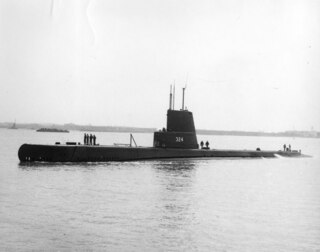
USS Blenny (SS/AGSS-324), a Balao-class submarine in commission from 1944 to 1969, was a ship of the United States Navy named for the blenny, a fish found along the rocky shores of the Atlantic Ocean. During World War II, Blenny conducted four war patrols in the Java Sea and South China Sea between 10 November 1944 and 14 August 1945. She sank eight Japanese vessels totaling 18,262 tons. In addition, she is credited with destroying more than 62 miscellaneous Japanese small craft by gunfire.
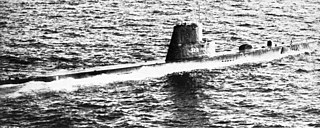
USS Charr (SS/AGSS-328), a Balao-class submarine, was a ship of the United States Navy named for the charr.

USS Chub (SS-329), a Balao-class submarine, was a ship of the United States Navy named for the chub, a game fish of the Atlantic and Mediterranean. The name is also given locally to a wide variety of American fishes. She was later transferred to Turkey where she served as TCG Gür.

USS Brill (SS-330), a Balao-class submarine, was a ship of the United States Navy in commission from 1944 to 1947. She was named for the brill, a European flatfish.

USS Bumper (SS-333), a Balao-class submarine, was a ship of the United States Navy named for the bumper, a small fish of the North and South Atlantic Ocean.

























